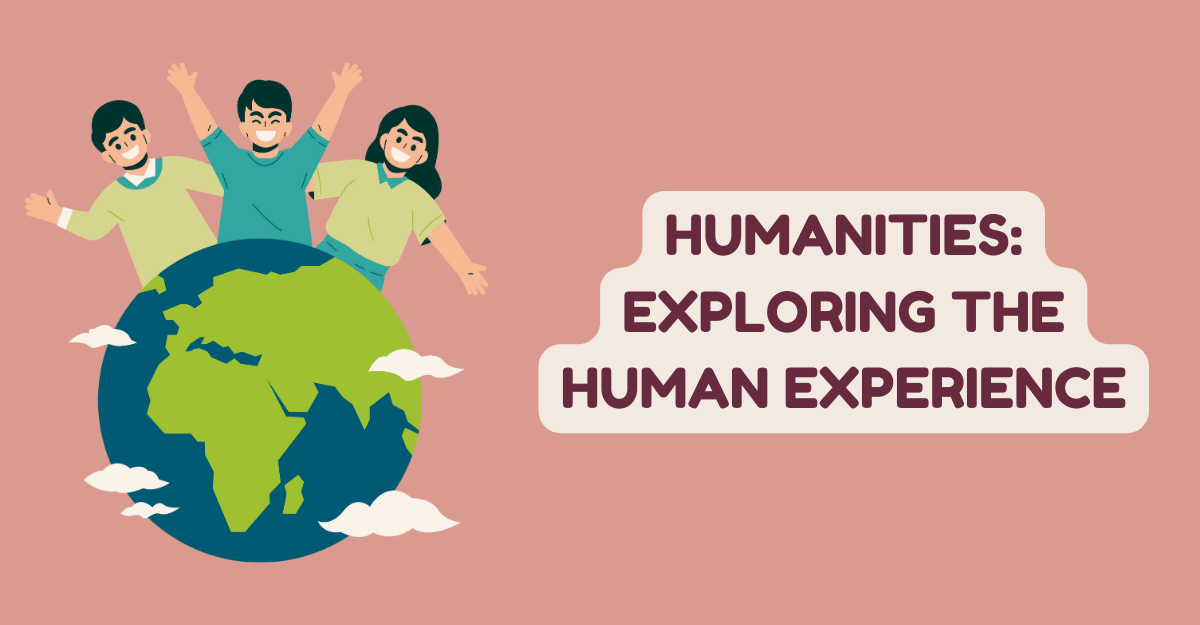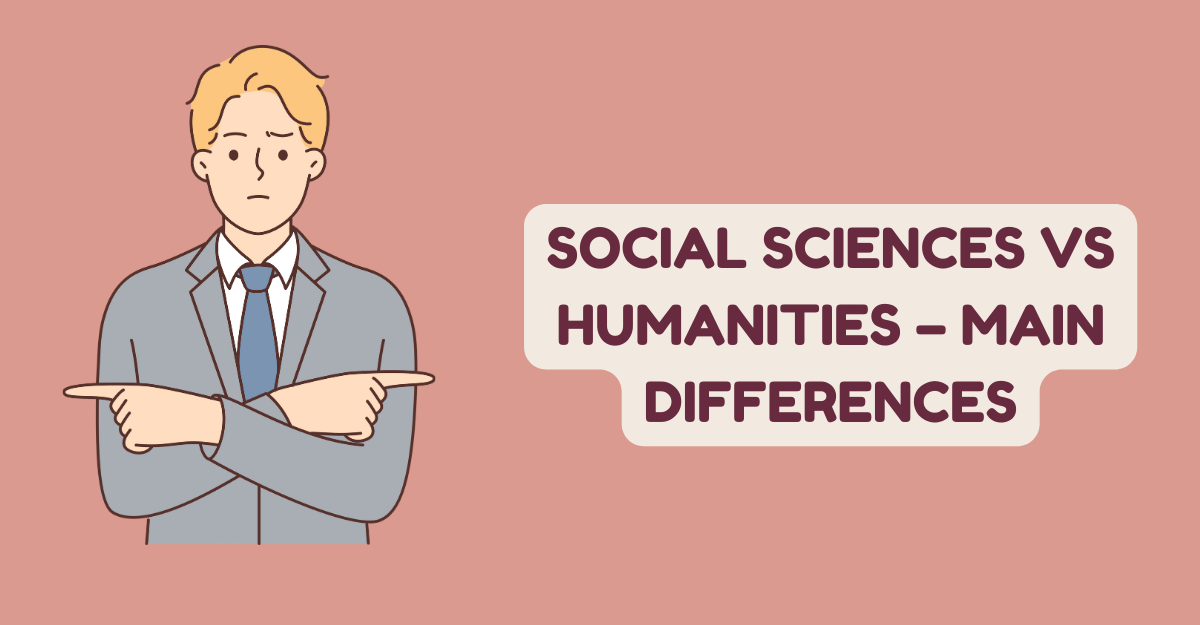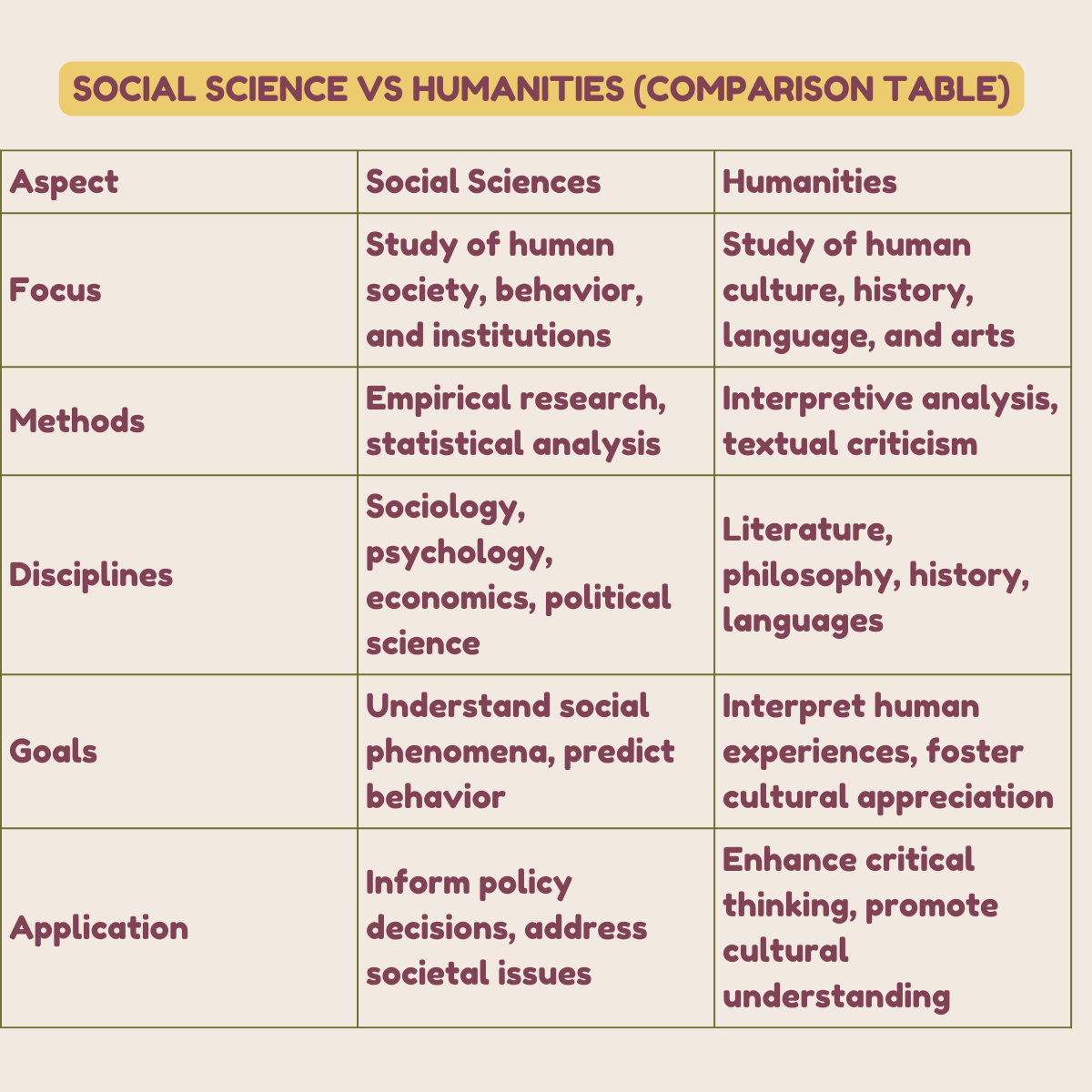The humanities and social sciences are both big areas of study that look into different parts of society, culture, and behavior. Some things about them are the same, but there are also things that make them different. In this in-depth guide, we’ll look at the main ways that arts and social sciences are different, including their aims, methods, and academic fields.
Do the humanities and social sciences offer different ways of looking at the human experience? The arts study cultural forms and personal experiences, while the social sciences use factual studies and numeric data to figure out how society works. This difference between reality and emotion makes me wonder what part they play in studying how people behave and connect with each other. The social sciences use statistics to look at changes in society, but the arts give us a deeper understanding of how people feel and ask moral questions.
The arts stress moral reasoning and critical thinking, while the social sciences stress real uses like making policies and modeling the economy. When these fields meet, it can be transformative and lead to conversations between different areas that question what people think they know. By understanding how the humanities and social sciences work together, we can build a bigger plan for dealing with tough social problems that takes into account both facts and people’s stories.
Humanities: Exploring the Human Experience

Humanities: Exploring the Human Experience
Humanities encompass a wide range of disciplines that focus on the study of human culture, history, language, literature, philosophy, and the arts. The primary goal of humanities is to understand and interpret the human experience throughout history and across different societies. Some common humanities disciplines include:
- History: Examines past events, civilizations, and societies to understand their impact on the present.
- Literature: Analyzes written works such as novels, poetry, and plays to explore themes, narratives, and literary techniques.
- Philosophy: Investigates fundamental questions about existence, knowledge, morality, and the nature of reality.
- Languages: Studies the structure, evolution, and usage of languages to understand communication and cultural expression.
- Arts: Explores various forms of artistic expression, including visual arts, music, theater, and film, to appreciate creativity and cultural significance.
Social Sciences: Understanding Society and Behavior

Social Sciences
Social sciences focus on the systematic study of human society, behavior, institutions, and interactions. These disciplines employ scientific methods to analyze social phenomena and understand patterns of behavior within different social contexts. Some common social science disciplines include:
- Sociology: Studies social behavior, institutions, and structures to understand how societies function and change over time.
- Psychology: Investigates human behavior and mental processes, including cognition, emotion, and personality, to understand individual and group dynamics.
- Economics: Analyzes the production, distribution, and consumption of goods and services to understand economic systems and behaviors.
- Political Science: Examines political institutions, ideologies, and power dynamics to understand governance, policies, and political behavior.
- Anthropology: Explores human societies, cultures, and biological diversity to understand the origins and variations of human behavior.
Social Sciences vs Humanities – Main Differences

Social Sciences vs Humanities – Main Differences
While both social sciences and humanities study aspects of human society and culture, they differ in their approaches, methodologies, and areas of focus. Here are some key differences between the two fields:
Approach and Methodology:
- Social Sciences:
- Social sciences often employ empirical research methods, including surveys, experiments, and statistical analysis, to study human behavior and social phenomena objectively.
- Humanities:
- Humanities rely more on interpretive and qualitative methods, such as textual analysis, critical interpretation, and historical research, to explore human culture, literature, and arts subjectively.
Areas of Focus:
- Social Sciences:
- Social sciences focus on understanding social structures, institutions, and behaviors, including economics, politics, sociology, psychology, and anthropology.
- Humanities:
- Humanities encompass a broader range of disciplines, including literature, philosophy, history, languages, arts, and cultural studies, which explore human creativity, expression, and intellectual pursuits.
Perspective and Purpose:
- Social Sciences:
- Social sciences often seek to explain and predict human behavior, social trends, and societal changes, aiming to generate empirical knowledge and inform policy decisions.
- Humanities:
- Humanities prioritize the interpretation and appreciation of human culture, values, beliefs, and artistic expressions, aiming to foster critical thinking, cultural understanding, and personal enrichment.
Social Science vs Humanities (Comparison Table)

Social Science vs Humanities (Comparison Table)
| Aspect | Social Sciences | Humanities |
|---|---|---|
| Focus | Study of human society, behavior, and institutions | Study of human culture, history, language, and arts |
| Methods | Empirical research, statistical analysis | Interpretive analysis, textual criticism |
| Disciplines | Sociology, psychology, economics, political science | Literature, philosophy, history, languages |
| Goals | Understand social phenomena, predict behavior | Interpret human experiences, foster cultural appreciation |
| Application | Inform policy decisions, address societal issues | Enhance critical thinking, promote cultural understanding |
Key Differences Between Social Science and Humanities
- Approach: Social sciences employ empirical methods to study human behavior objectively, while humanities rely on interpretive approaches to explore human culture subjectively.
- Areas of Focus: Social sciences focus on social structures and institutions, while humanities encompass a broader range of disciplines, including literature, philosophy, history, and arts.
- Perspective: Social sciences seek to explain and predict human behavior, whereas humanities prioritize interpretation, appreciation, and cultural understanding.
- Methods: Social sciences use quantitative research methods such as surveys and experiments, while humanities rely on qualitative methods such as textual analysis and critical interpretation.
- Goals: Social sciences aim to generate empirical knowledge and inform policy decisions, while humanities aim to foster critical thinking, cultural appreciation, and personal enrichment.
Conclusion
To sum up, both the social sciences and the humanities try to understand different parts of human society and culture, but they do so in different ways and with different topics of interest. The arts study human culture in a biased way through analytical methods, while the social sciences use empirical research methods to study social events accurately. Both areas are very important for helping us learn more about people and making our educational and cultural lives better. Whether you’re interested in the scientific study of social systems or the interpretive study of human creation, both the social sciences and the arts can help you understand how complicated life is.






